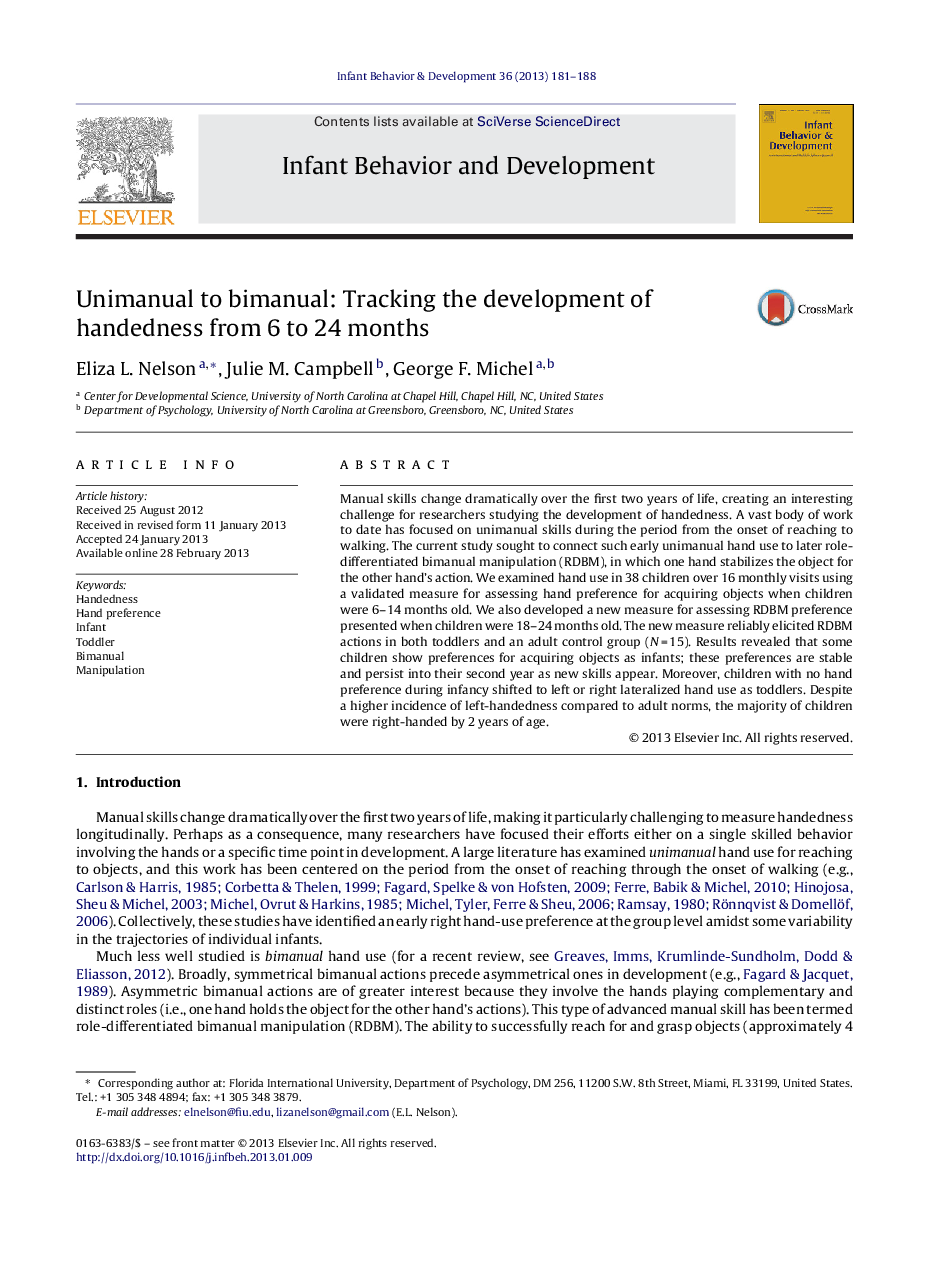| کد مقاله | کد نشریه | سال انتشار | مقاله انگلیسی | نسخه تمام متن |
|---|---|---|---|---|
| 917209 | 919254 | 2013 | 8 صفحه PDF | دانلود رایگان |

Manual skills change dramatically over the first two years of life, creating an interesting challenge for researchers studying the development of handedness. A vast body of work to date has focused on unimanual skills during the period from the onset of reaching to walking. The current study sought to connect such early unimanual hand use to later role-differentiated bimanual manipulation (RDBM), in which one hand stabilizes the object for the other hand's action. We examined hand use in 38 children over 16 monthly visits using a validated measure for assessing hand preference for acquiring objects when children were 6–14 months old. We also developed a new measure for assessing RDBM preference presented when children were 18–24 months old. The new measure reliably elicited RDBM actions in both toddlers and an adult control group (N = 15). Results revealed that some children show preferences for acquiring objects as infants; these preferences are stable and persist into their second year as new skills appear. Moreover, children with no hand preference during infancy shifted to left or right lateralized hand use as toddlers. Despite a higher incidence of left-handedness compared to adult norms, the majority of children were right-handed by 2 years of age.
Figure optionsDownload as PowerPoint slideHighlights
► We tracked the development of handedness in 38 children over 16 visits.
► We introduced a new measure for assessing bimanual handedness.
► We found that some infants had stable preferences, persisting across skills.
► Other infants had no preference, but became right- or left-handed by 2 years.
► Similar to adults, the majority of children were right-handed.
Journal: Infant Behavior and Development - Volume 36, Issue 2, April 2013, Pages 181–188